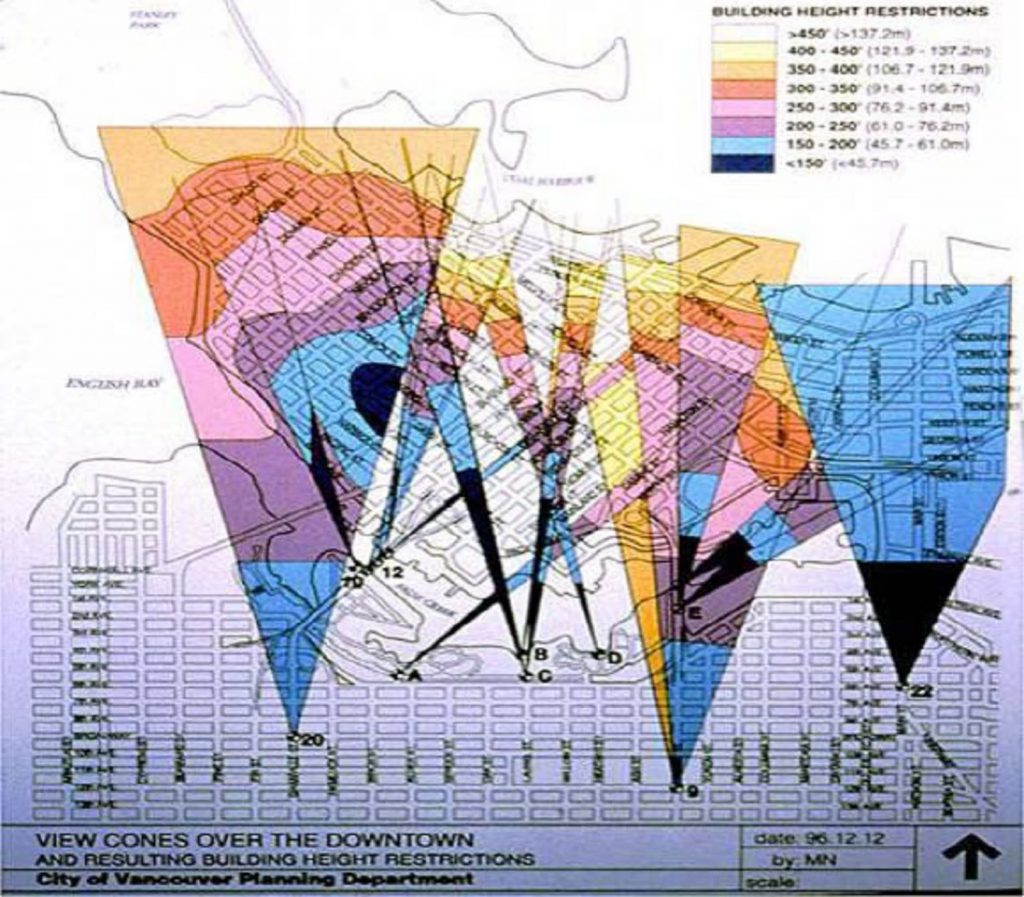The Value of View Cones
By TH!NK by IBI
Date
March 2, 2018Oxford. San Francisco. Vancouver. London. Through limited heights and thin forms, all of these cities have tried to ensure special vantages can be seen by all. What is the value of a view cone and how do we make trade offs between a protected view and the changing urban form? This debate has been prevalent in Vancouver recently as the city worked to adopt a new neighborhood plan that would allow towers to cut into one of these protected view cones.

Vancouver’s view cones. Click here for larger image. Image Credit: City of Vancouver Planning Department
Vancouver has 27 protected view cones across the city. According to the City of Vancouver,
“In 1978 and 1979 the City conducted two surveys to capture the public’s goals for Vancouver. In the surveys, residents identified their highest priorities including preserving the views of the shoreline, the downtown skyline and the North Shore. In 1988, the City began the Vancouver Views study to better understand the public’s perspective. The study resulted in a proposed view protection policy and established the City’s protected view corridors.”
These view cones have dramatically shaped the development of Vancouver’s skyline over the years, forcing thinner forms and step-backs away from designated views. Buildings have, on occasion, been allowed to pierce the view cone, such as the B.I.G. designed Vancouver House. But others have been forced to change their shape, such as early renditions of the “jenga tower” proposed in the Coal Harbour neighbourhood.
The ambitious new neighbourhood plan faced much criticism for allowing 3 future towers to break the view cones right from the start in the overall zoning of the site. According to the founder of the “Save Our Skyline YVR” campaign, Melody Ma,
“I felt really disappointed because this is an irreversible decision that they are making. …
Once you put up these towers, no one can re-create these views that Mother Nature gave us. These public views are priceless.”
The director of planning, however, stood by the plan. Despite the public support for protection of the view cones, the high density of the towers, he argued, is needed to pay for the other amenities in the plan. How do we balance the public good with the economic needs of a neighbourhood? Having spent so many years protecting the views thus far, what other trade offs might a city make to ensure its staying in line with its goals while balancing its books? Will this change to the view cones inspire more leniency in development in the future? The value of the view cone in Vancouver is currently up for debate and it will be interesting to watch how the skyline changes from this decision.
Photo by Spencer Watson on Unsplash







